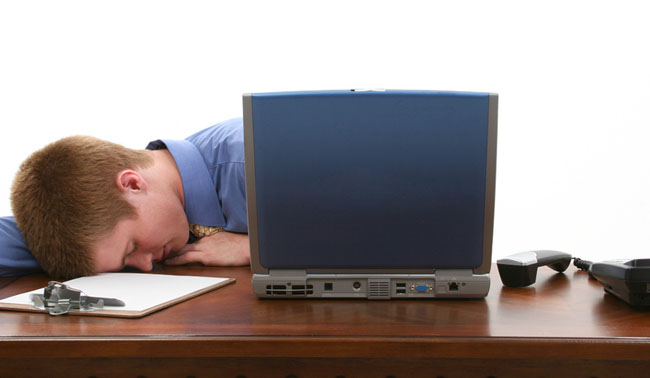
The growing repertoire of gadgets at our disposal, from smartphones to televisions, may make it easier to work, play and connect with one another. Unfortunately, these devices may also be making us very, very tired.
According to the 2011 “Sleep in America” poll, conducted by the National Sleep Foundation, 95 percent of Americans ages 13 to 64 use some type of electronic device — television, computer, video game or cell phone — in the hour before going to bed. The near-constant presence of screens, doctors say, may account for two thirds (63 percent) of respondents admitting that they don’t get enough sleep throughout the week.
“Artificial light exposure between dusk and the time we go to bed at night suppresses release of the sleep-promoting hormone melatonin, enhances alertness and shifts circadian rhythms to a later hour—making it more difficult to fall asleep,” said Dr, Charles Szeisler of Harvard Medical School and Brigham and Woman’s Hospital in a statement. “This study reveals that light-emitting screens are in heavy use within the pivotal hour before sleep. Invasion of such alerting technologies into the bedroom may contribute to the high proportion of respondents who reported that they routinely get less sleep than they need.”
Among the baby boomer population, those ages 46 to 64, television was the most often used electronic device, with 67 percent saying they watch before falling asleep. That compares to about 50 percent of 19- to 29-year-olds (generation Y’ers) who watch TV before bed.
Cell phone usage was the most pervasive among the younger generations, with 56 percent of generation Z’ers, those ages 13 to 18, and 42 percent of 19- to 29-year-olds talking or texting in the hour before bed. Only 15 percent of generation X’ers (30-48) and 5 percent of baby boomers report cell phone usage in the hour prior to falling asleep.
In addition, more than six in ten respondents say they use the computer at least a few nights a week. Fifty-five percent of generation Z’ers say they surf the Internet before going to bed, as do 47 percent of generation Y’ers.
Late-night video game sessions are also fairly common among the younger generations, with 36 percent of 13- to 18-year-olds and 28 percent of 19- to 29-year-olds admitting to playing before bed.
All of these gizmos and screens amount to far less sleep, say experts.
“Over the last 50 years, we’ve seen how television viewing has grown to be a near constant before bed, and now we are seeing new information technologies such as laptops, cell phones, video games and music devices rapidly gaining the same status,” said Dr. Lauren Hale of Stony Brook University Medical Center in a statement. “The higher use of these potentially more sleep-disruptive technologies among younger generations may have serious consequences for physical health, cognitive development and other measures of wellbeing.”
Read the full results of the 2011 “Sleep in America” study here.


